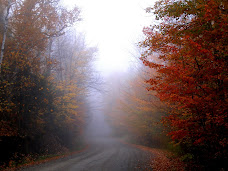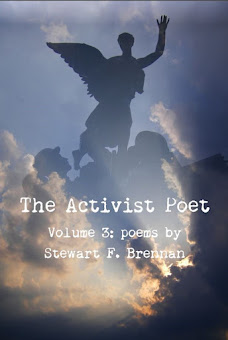Seventy-five people confirmed dead and almost 300 missing, a day after a 6.3 magnitude tremor rocked Christchurch

The New Zealand prime minister declared a national state of emergency to cope with the disaster [Reuters]
Source: Al Jazeera
http://english.aljazeera.net/news/asia-pacific/2011/02/2011222224432698153.html
The death toll from a devastating earthquake in Christchurch, New Zealand's second biggest city, has risen to 75, up from the previous total of 65.
The city's mayor Bob Parker said almost 300 people were listed as missing but cautioned that the number trapped in collapsed buildings was not known.
However, 15 survivors who had been trapped in a six-storey office building since Tuesday's quake were rescued on Wednesday morning.
"We've got them out of the building and they're still alive, which was the goal for us, and we're continuing to search for more," a fire department spokesman told national radio.
Local media reported earlier that at least one person had been pulled out alive from the ruins of a nearby building.
John Key, the prime minister, said a national state of emergency has been declared to cope with the effects of the quake.
"In practice this enables the strongest possible focus of local, national and international resources working together to achieve the best possible response in the shortest timeframe," he told reporters after an emergency cabinet meeting prompted by the 6.3-magnitude earthquake.
Cathedral damaged
At least eight buildings collapsed in the quake, including the spire of the iconic stone Christchurch Cathedral, which toppled into a central city square.
Video footage showed some multi-storey buildings collapsing in on themselves while walls of some others collapsed into the streets.
The streets of the central city district were strewn with bricks and shattered concrete as thousands of dazed, screaming and crying residents wandered through them.
Meanwhile, groups of people helped victims, clutching bleeding wounds, and others were carried to private vehicles in makeshift stretchers fashioned from rugs or bits of debris.
Some units of the New Zealand army that were in the city for an exercise were activated to aid with rescue operations.
Power and telephone lines were knocked out, and pipes burst, flooding the streets with water. Some cars apparently parked on the street were buried under the rubble.
Anne Johns, a Christchurch resident, told Al Jazeera about her experience of the earthquake: "I was in, what is regarded as the safest building in town, the New Christchurch Art Gallery.
"A lot of the glass did break in the building and we went outside to find a party of school children and there was lots of smoke outside."
BP Oil New Zealand has closed its Christchurch service stations subject to inspection of ground based tanks and pipes after the earthquake.
They were shut as a precaution after either loss of power or damage to some forecourts.
Aftershocks expected
An earthquake in September last year wrecked hundreds of buildings in the city, and caused an estimated $3 billion in damage. A strong aftershock in December caused further damage to the buildings.
Bill Fry, a Wellington-based seismologist, told Al Jazeera: "The ground definitely shook more than it did in September, the duration was less but it shook more violently.
"We expect aftershocks in the coming days so the buildings will be susceptible to more damage."
Christchurch is built on silt, sand and gravel, with a water table beneath.
In an earthquake, the water rises, mixing with the sand and turning the ground into a swamp and swallowing up sections of road and entire cars.
TV footage showed sections of road that had collapsed into a milky, sand-coloured lake right beneath the surface as one witness described the footpaths as like "walking on sand".
Christchurch is home to about 350,000 people and is considered a tourist centre and gateway to the South Island

The New Zealand prime minister declared a national state of emergency to cope with the disaster [Reuters]
Source: Al Jazeera
http://english.aljazeera.net/news/asia-pacific/2011/02/2011222224432698153.html
The death toll from a devastating earthquake in Christchurch, New Zealand's second biggest city, has risen to 75, up from the previous total of 65.
The city's mayor Bob Parker said almost 300 people were listed as missing but cautioned that the number trapped in collapsed buildings was not known.
However, 15 survivors who had been trapped in a six-storey office building since Tuesday's quake were rescued on Wednesday morning.
"We've got them out of the building and they're still alive, which was the goal for us, and we're continuing to search for more," a fire department spokesman told national radio.
Local media reported earlier that at least one person had been pulled out alive from the ruins of a nearby building.
John Key, the prime minister, said a national state of emergency has been declared to cope with the effects of the quake.
"In practice this enables the strongest possible focus of local, national and international resources working together to achieve the best possible response in the shortest timeframe," he told reporters after an emergency cabinet meeting prompted by the 6.3-magnitude earthquake.
Cathedral damaged
At least eight buildings collapsed in the quake, including the spire of the iconic stone Christchurch Cathedral, which toppled into a central city square.
Video footage showed some multi-storey buildings collapsing in on themselves while walls of some others collapsed into the streets.
The streets of the central city district were strewn with bricks and shattered concrete as thousands of dazed, screaming and crying residents wandered through them.
Meanwhile, groups of people helped victims, clutching bleeding wounds, and others were carried to private vehicles in makeshift stretchers fashioned from rugs or bits of debris.
Some units of the New Zealand army that were in the city for an exercise were activated to aid with rescue operations.
Power and telephone lines were knocked out, and pipes burst, flooding the streets with water. Some cars apparently parked on the street were buried under the rubble.
Anne Johns, a Christchurch resident, told Al Jazeera about her experience of the earthquake: "I was in, what is regarded as the safest building in town, the New Christchurch Art Gallery.
"A lot of the glass did break in the building and we went outside to find a party of school children and there was lots of smoke outside."
BP Oil New Zealand has closed its Christchurch service stations subject to inspection of ground based tanks and pipes after the earthquake.
They were shut as a precaution after either loss of power or damage to some forecourts.
Aftershocks expected
An earthquake in September last year wrecked hundreds of buildings in the city, and caused an estimated $3 billion in damage. A strong aftershock in December caused further damage to the buildings.
Bill Fry, a Wellington-based seismologist, told Al Jazeera: "The ground definitely shook more than it did in September, the duration was less but it shook more violently.
"We expect aftershocks in the coming days so the buildings will be susceptible to more damage."
Christchurch is built on silt, sand and gravel, with a water table beneath.
In an earthquake, the water rises, mixing with the sand and turning the ground into a swamp and swallowing up sections of road and entire cars.
TV footage showed sections of road that had collapsed into a milky, sand-coloured lake right beneath the surface as one witness described the footpaths as like "walking on sand".
Christchurch is home to about 350,000 people and is considered a tourist centre and gateway to the South Island

















a.jpg)

a.jpg)








No comments:
Post a Comment
Thanks for commenting on this post. Please consider sharing it on Facebook or Twitter for a wider discussion.